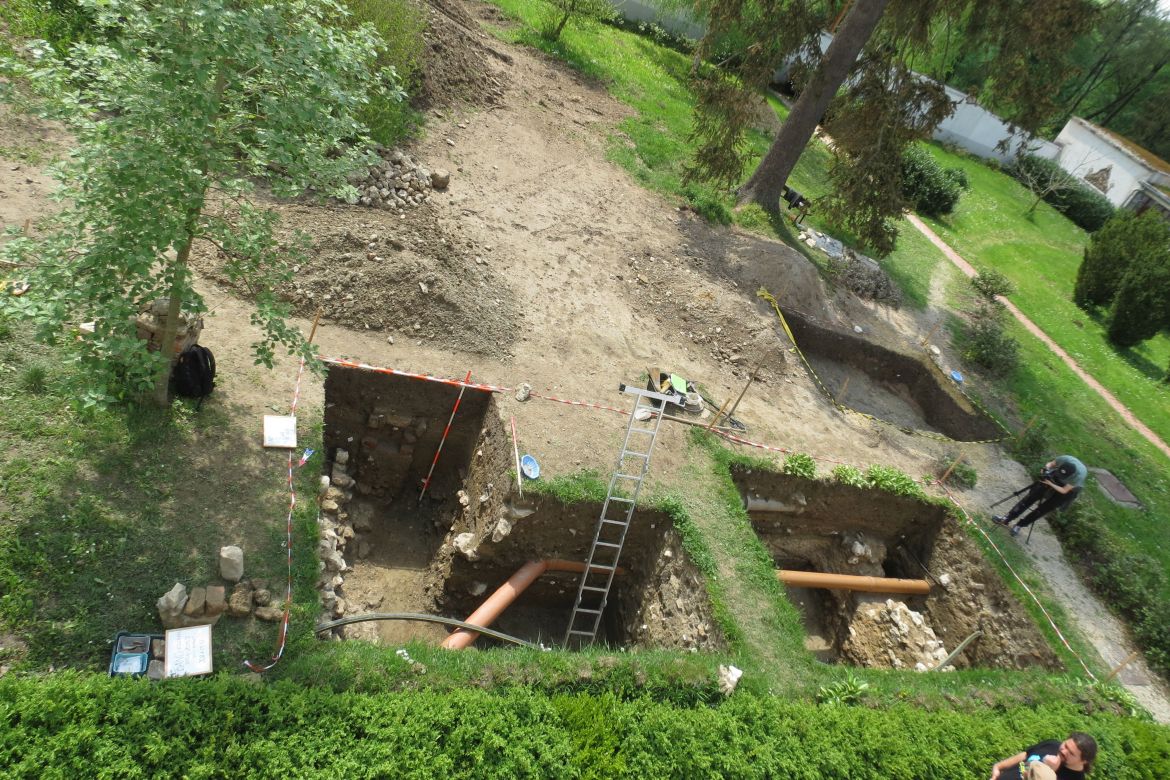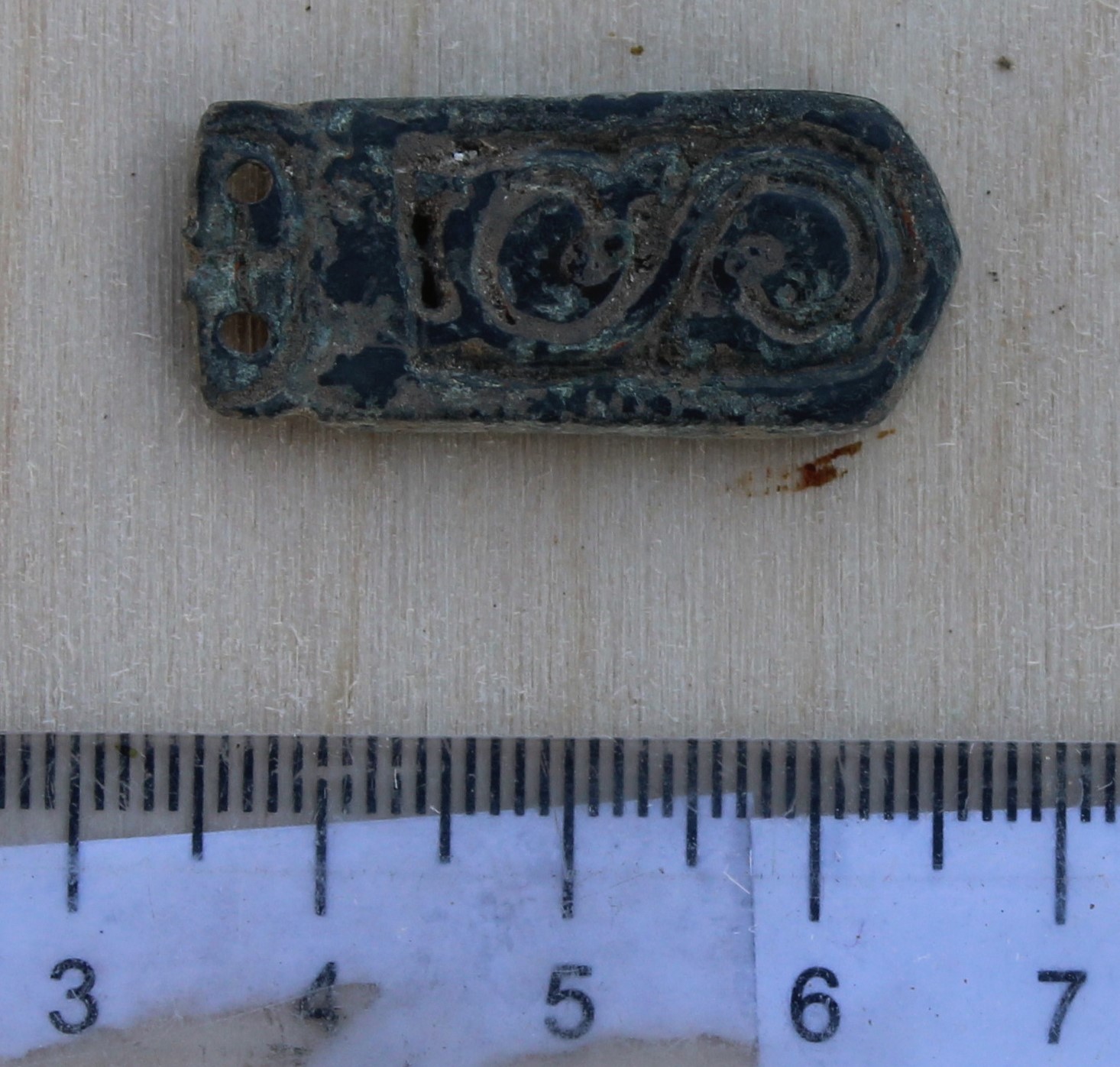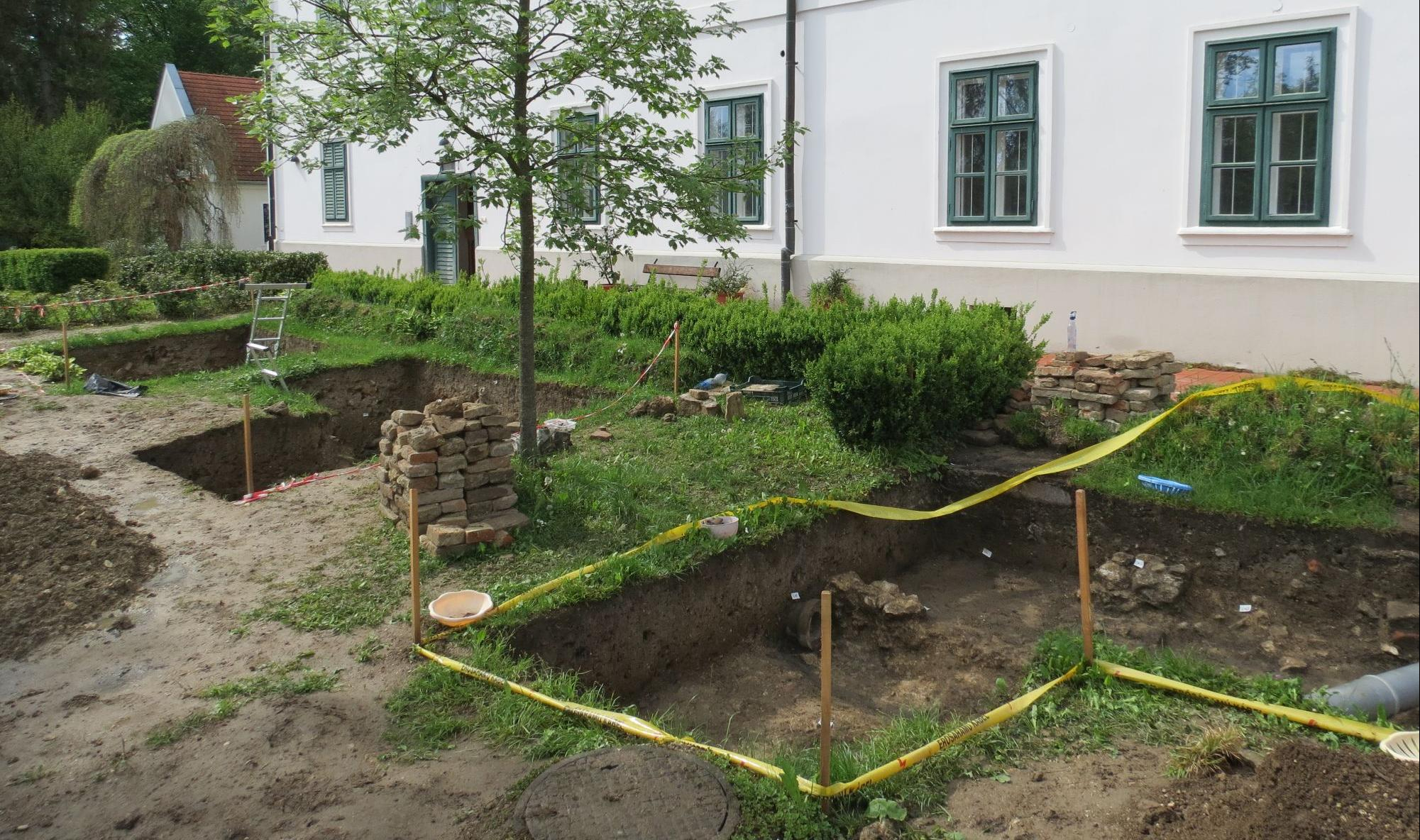Within the framework of the Kings, Saints and Monasteries research program launched with the support of the Eötvös Loránd Research Network (ELKH), the design works of the Benedictine monastery founded by Stephen I of Hungary began in April 2022 after a detailed geophysical survey.
The project is organized by the ELKH Research Centre for the Humanities (RCH) under the leadership of Szabolcs Balázs Nagy, an archaeologist at the ELTE RCH Institute of Archeology, where he specializes in the Middle Ages. Technicians experienced in field work, university students and volunteers from the Laczkó Dezső Museum are also taking part. The first phase of the excavation in the garden of the monastery was scheduled to last until the end of May 2022, and has also been supported by the monastic community of the Bakonybél monastery.
Archaeologists have opened up sections in the southern courtyard of the 18th-century convent, where the remains of a monastery with a long history have been revealed beautifully among the large amount of new and more modern channels, utility pipes and landscaping work.
 Photo: Szabolcs Balázs Nagy
Photo: Szabolcs Balázs Nagy
Monks returning after the Turkish occupation initially failed to search for medieval ruins in the area reclaimed by the forest, and it was not until 1695 that the immediate surroundings of the ruins could be cleared. The earliest excavations – though already post-occupation – can be traced from this period. Among the early memories of the reorganized Benedictine community is a mortar-mixing tub, the remains of which were found relatively intact.
 Photo: Szabolcs Balázs Nagy
Photo: Szabolcs Balázs Nagy
In these sections, a rather complex image emerges from the medieval walls excavated under the modern layers. Due to their size, many of them may well be remnants of multi-storey buildings, while pieces of white plaster and fragments of a window carved from stone may indicate residential or farm buildings. The original role of the building details in the current phase of the research cannot yet be definitively determined, though the medieval church may have stood further north, under today’s building complex.
It has also been confirmed that the remnants of the wall, which are of different design and partly intersect, show at least four different construction periods or phases. This clearly proves that the area was already used extensively before the Turkish occupation. As a material legacy of medieval monks, in addition to various fragments of vessels and other small items, a 15-16th century book clasp decorated with Gothic minuscule was also found. Memories of the pre-medieval settlement include a few fragments of vessels from prehistoric and other ages, a Roman medal, and a small, late-Avar-era belt buckle.
 Photo: Szabolcs Balázs Nagy
Photo: Szabolcs Balázs Nagy
The program, implemented with ELKH’s financial support, has three pillars, two of which are linked to Bakonybél. In addition to researching the medieval construction history of the monastery, the excavation of the hermit’s cave of the Bakonybél-Szentkút site – the so-called Borostyánkő, or Amber Stone – began in mid-May. The site may have previously housed a chapel, which was erected on the site of the hermitage allegedly inhabited by Saint Gellert.
 Photo: Szabolcs Balázs Nagy
Photo: Szabolcs Balázs Nagy
As the third part of the project, the research started last year in the area of the Benedictine Abbey of Tihany will continue. Led by Kornél Szovák, the director of the RCH Gyula Moravcsik Institute, and with the coordination of Balázs Gusztáv Mende, deputy director of the RCH Institute of Archeogenomics and senior research fellow, the team will carry out archaeological excavation and geophysical research of the area of the Tihany dwellings, and the entire Tihany Peninsula will be surveyed using LIDAR technology.

